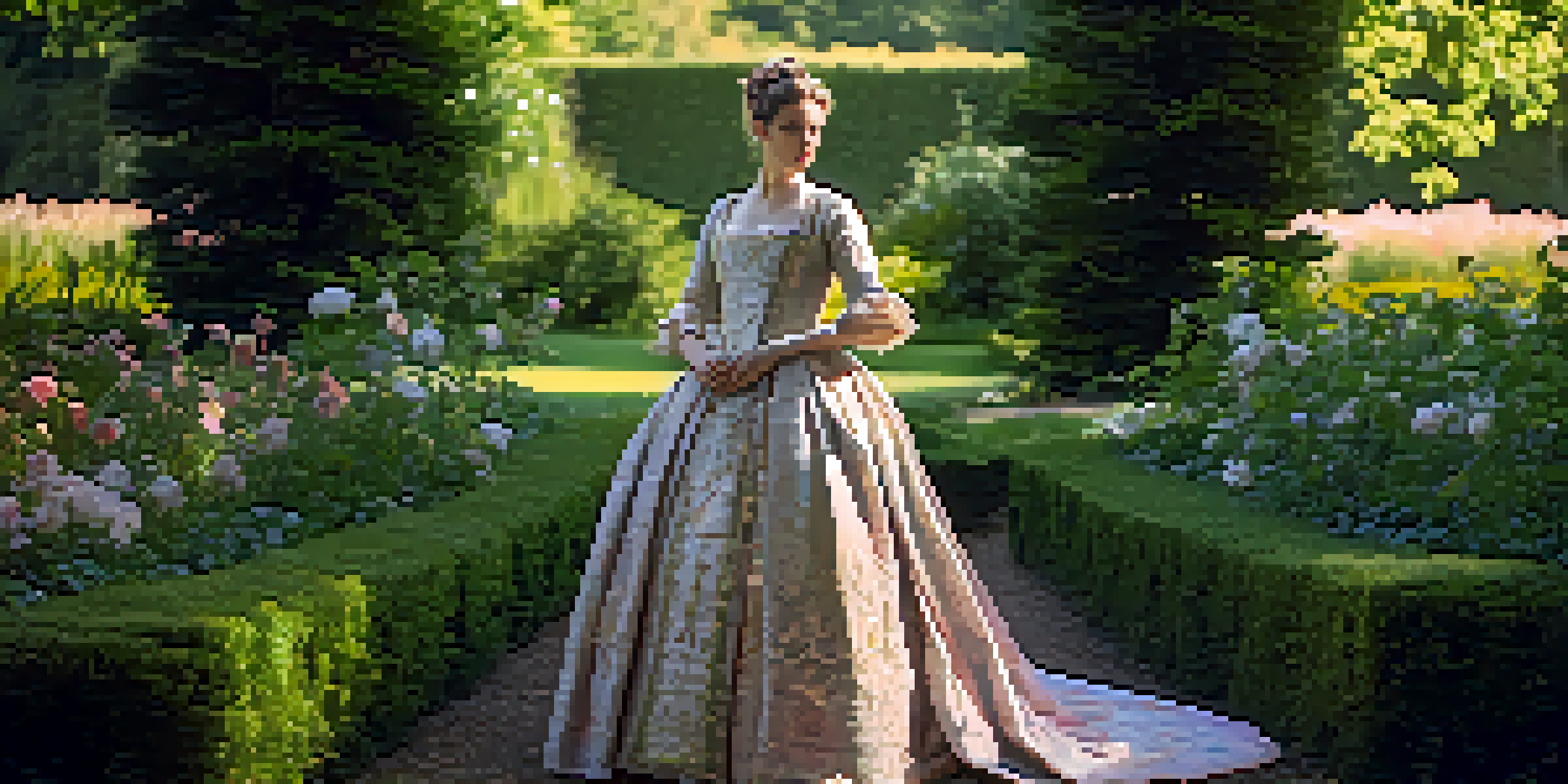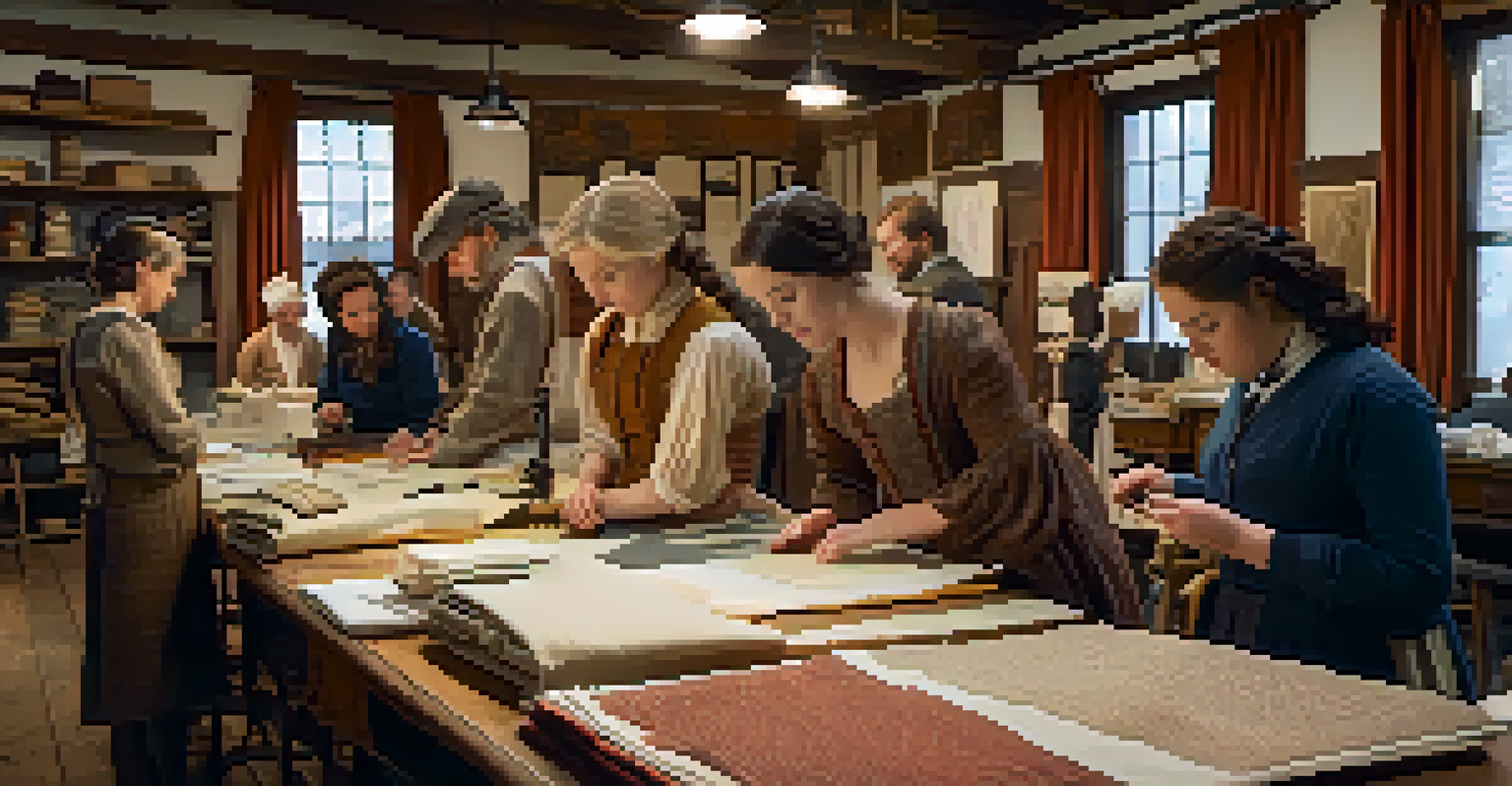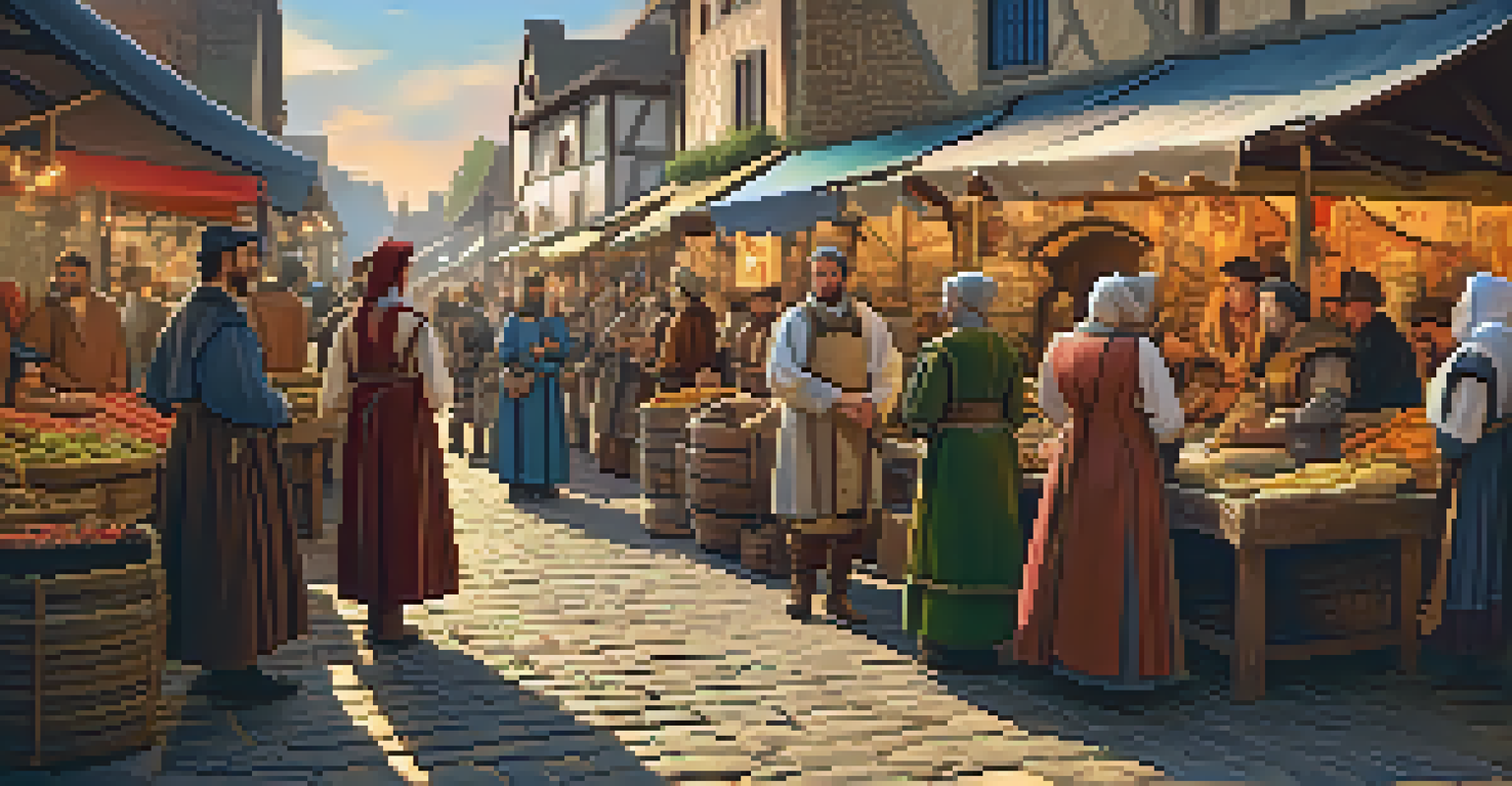The Role of Costumes in Historical Reenactments Explained

Understanding the Importance of Historical Costumes
Costumes play a crucial role in historical reenactments by bringing the past to life. They serve as visual representations of specific time periods, helping participants and audiences alike to immerse themselves in history. When done well, these costumes can evoke emotions and tell stories that textbooks often overlook.
Costumes are the visible embodiment of history, and they have the power to transport us to times long past.
Consider the difference between a modern T-shirt and a carefully crafted 18th-century gown. The gown not only looks different but carries the weight of cultural significance and craftsmanship. This attention to detail fosters a deeper connection to the historical narrative being reenacted.
Moreover, costumes help to transport participants and spectators into another era, creating a shared experience that transcends time. They encourage a sense of community among reenactors, who often bond over the challenges and joys of accurately representing their chosen period.
Crafting Authenticity with Historical Accuracy
Authenticity in costume design is essential for historical reenactors. This means not only replicating the look of garments but also considering the materials and techniques used in the past. For example, using natural dyes and period-appropriate fabrics can significantly enhance the overall authenticity of a costume.

Reenactors often conduct extensive research to ensure their costumes reflect accurate historical details. This pursuit of authenticity can involve studying paintings, surviving garments, and even consulting experts on specific periods. Such dedication enriches the reenactment experience and fosters respect for the history being portrayed.
Costumes Bring History to Life
Historical costumes serve as visual representations that immerse participants and audiences in past events.
When costumes accurately reflect the era, they create a more immersive experience. Participants and audiences can appreciate the nuances of everyday life in that time, from the style of dress to the social norms that shaped the era.
The Role of Costumes in Character Development
Costumes are integral to character development in historical reenactments. They allow participants to embody the roles they are portraying, giving them a physical manifestation of their character’s identity. This transformation can lead to a more engaging and believable performance.
History is not a mere collection of dates and events; it is the fabric of our identity, woven together with the threads of culture and tradition.
For instance, an actor portraying a noble figure may wear lavish fabrics and intricate designs, while a commoner might don simpler, more practical attire. These choices not only reflect social status but also inform how the character interacts with others during the reenactment.
Furthermore, wearing a costume can influence an actor's mindset and behavior. It’s fascinating to see how clothing can change body language and confidence, helping participants to fully embrace their roles and create a more dynamic storytelling experience.
Costumes as Educational Tools in Reenactments
Costumes serve as powerful educational tools in historical reenactments. They provide a tangible connection to the past, allowing audiences to visualize and understand historical concepts more clearly. When viewers see individuals dressed in period attire, they can better grasp the context of the events being reenacted.
In many cases, reenactors take on the role of educators, explaining the significance of their costumes to spectators. This interaction fosters curiosity and encourages questions about historical practices, customs, and lifestyles. For instance, discussing the intricacies of a soldier's uniform can lead to insights about military life during that time.
Authenticity Enhances Experience
Accurate costume design, including materials and techniques, enriches the reenactment experience and fosters respect for history.
By making history accessible and relatable through costumes, reenactors can inspire a deeper interest in historical events and figures. This blend of education and entertainment allows audiences to connect with history on a personal level.
The Challenges of Costume Creation and Maintenance
Creating and maintaining historical costumes can be a challenging endeavor for reenactors. The process often requires a combination of sewing skills, historical research, and sometimes, a bit of trial and error. Finding the right materials and patterns that are true to the period can be a daunting task.
Additionally, the wear and tear of costumes during events can pose another challenge. Reenactors must be prepared to make repairs on the fly or invest time in proper maintenance to ensure their garments remain in good condition. This dedication reflects their commitment to authenticity.
Moreover, the financial aspect of costume creation can’t be overlooked. Quality materials and skilled craftsmanship can be costly, leading many reenactors to seek creative solutions, such as making their own costumes or collaborating with fellow enthusiasts to share resources.
Community and Collaboration in Costume Design
The world of historical reenactments thrives on community and collaboration, especially when it comes to costume design. Reenactors often share resources, knowledge, and skills, fostering a sense of camaraderie. This collaboration can lead to innovative costume designs that reflect a collective passion for history.
Workshops and events dedicated to costume making provide opportunities for individuals to learn from one another. Participants can exchange tips on sewing techniques or sourcing materials, enhancing their skills while bonding over a shared interest. This communal spirit enriches the reenactment experience and supports newcomers in the hobby.
Community Drives Costume Creation
The collaborative spirit among reenactors fosters innovative costume designs and enhances the overall quality of reenactments.
By working together, reenactors can create more impressive and diverse representations of history. This collaboration not only improves individual costumes but also elevates the overall quality of the reenactment, making it a more enjoyable experience for everyone involved.
The Future of Costumes in Historical Reenactments
As historical reenactments evolve, so too does the role of costumes within them. With advancements in technology, such as 3D printing and digital fabric printing, creating accurate and intricate designs is becoming easier and more accessible. This opens the door for new interpretations of historical attire.
Additionally, there is a growing trend toward inclusivity in reenactments, leading to broader representations of history. This can include costumes that reflect diverse cultures and experiences, enriching the narratives presented during events. By embracing a wider range of historical perspectives, reenactments can provide a more comprehensive view of the past.

Looking ahead, the role of costumes in historical reenactments will continue to adapt. As participants seek to engage audiences in novel ways, costumes will remain a vital tool for storytelling, education, and community building.